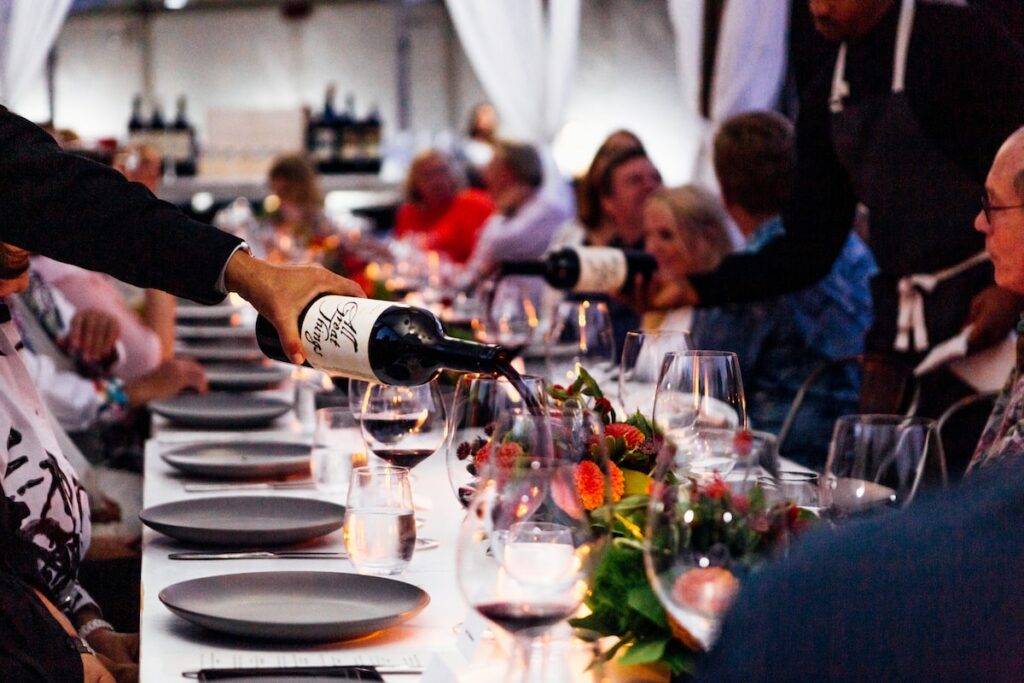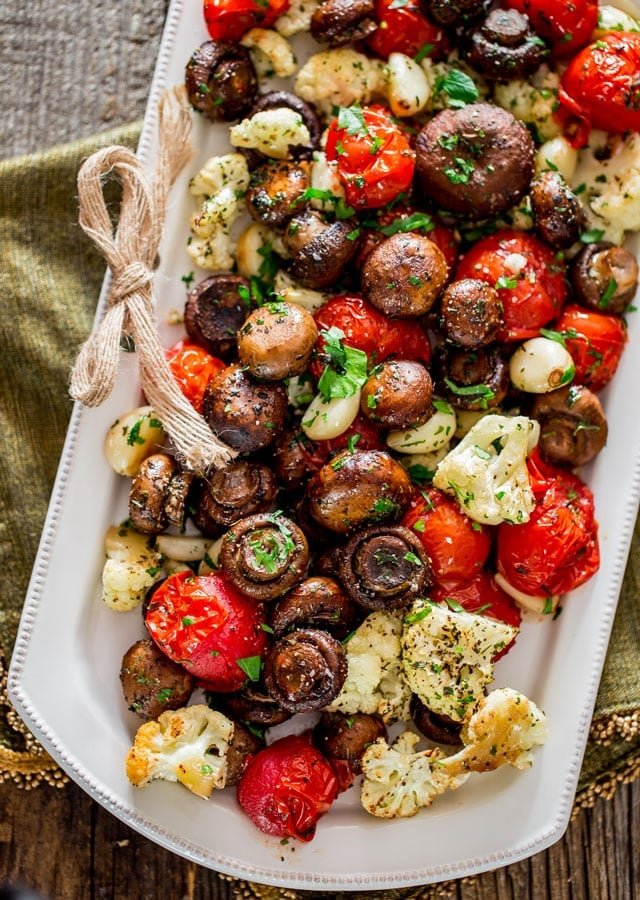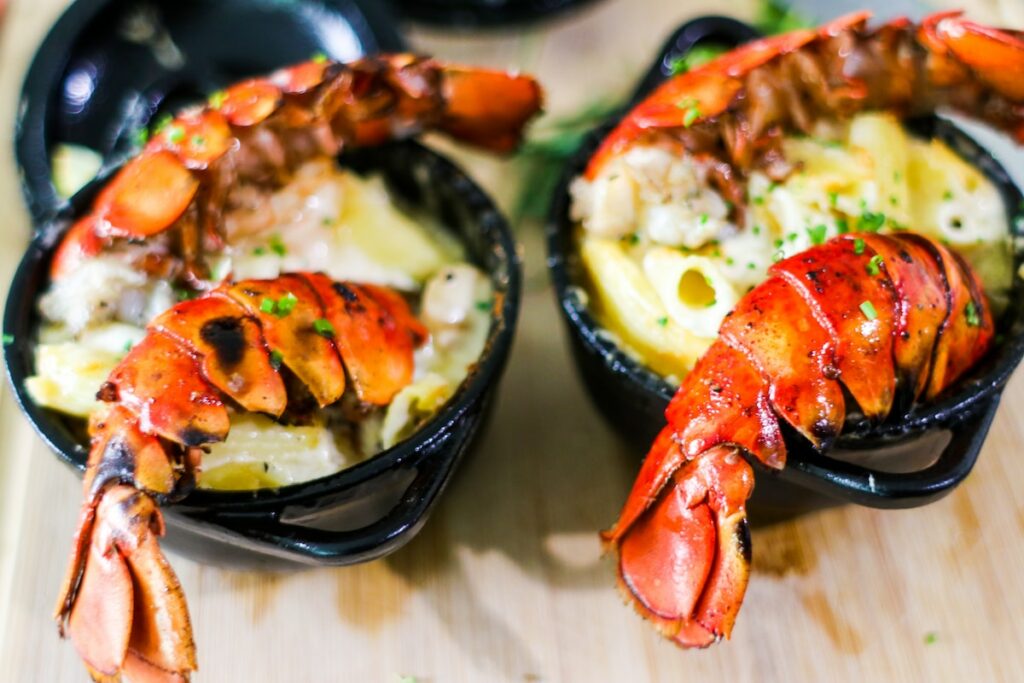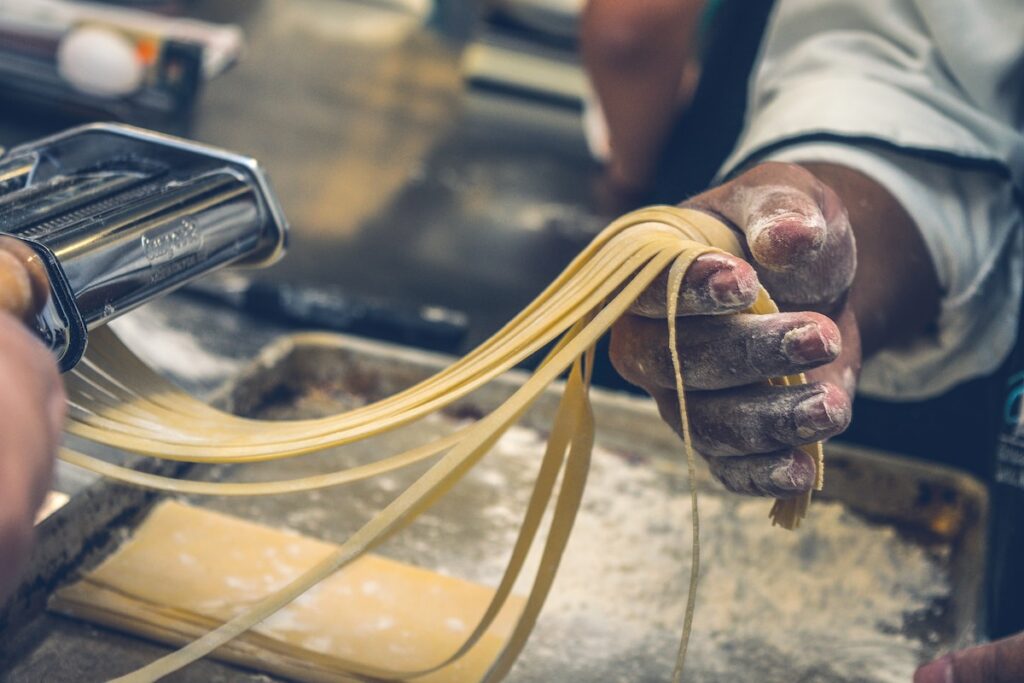Thanksgiving: Hot Tips for Pairing the Perfect Wine with Your Favorite Foods

As the autumn leaves begin dancing their new colours in the air, a vibrant, crisp chill reminded me this morning that our thoughts turn to the celebration of gratitude and abundance – Thanksgiving. If you expect friends and family to share this cherished tradition around the diner table or you choose to celebrate by yourself, this year I teamed up with our food editor, to help you explore how the right bottle of wine can enhance the flavors of your favorite foods, turning a festive meal into a symphony of tastes that dance upon the palate.
The world of wine is as diverse and nuanced as the flavors it brings to the table. For connoisseurs and casual drinkers alike, same question is coming back: Red or white? Choosing the right wine on Thanksgiving can transform one of the most memorable meals of the year into a culinary adventure. We invite you along to explore the nuances of red and white wines and to help pair the perfect wine for your favorite dishes.
Red Wine: bold and beautiful
Red wines are often associated with depth, richness and complexity. Their robust flavors and tannins make them an excellent choice for heartier dishes. Picture a velvety Cabernet Sauvignon or a spicy Shiraz alongside a perfectly grilled steak. The tannins in red wine help cut through the richness of meats, leaving your palate refreshed and ready for the next bite.
When it comes to pasta dishes, particularly those with tomato-based sauces, a Chianti or Sangiovese can be a game-changer. The acidity in these reds harmonizes with the acidity in the tomatoes, creating a symphony of flavors that dance on your taste buds.
Red wines are a wonderful choice if you only want vegetables on your plate! Earthy Pinot Noirs can be the ideal partner for mushroom-based dishes or roasted vegetables, showcasing the wine’s ability to enhance and elevate the natural flavors of the food.

The elegant simplicity of White Wine
White wines, on the other hand, are often celebrated for their crispness, freshness, and versatility. If your culinary adventures lean toward lighter fare such as seafood, salads, or poultry, a well-chilled Sauvignon Blanc or Pinot Grigio might be the perfect accompaniment.
Consider the classic pairing of Chardonnay with buttery lobster or creamy Alfredo pasta. The wine’s buttery notes complement the richness of the dish, creating a harmony that can make your dining experience truly exceptional.
For those who enjoy the subtle sweetness of Asian cuisine, the floral and fruity notes of a Riesling can be an excellent choice. Its inherent sweetness can balance the spice in dishes like Thai or Indian curries, creating a delightful contrast that enhances both the food and the wine.


Rosé: the magic happens between red and white
As a delightful compromise between red and white, rosé wines bring a touch of sophistication and versatility to the table. With their vibrant hues and diverse flavor profiles, rosés can be paired with an array of dishes, from light salads to grilled meats.
A dry rosé, for instance, can be an ideal companion for a summer picnic featuring fresh salads and grilled chicken. Its acidity and fruitiness can cut through the heat, offering a refreshing contrast to the meal.
Hot Tips for Effective Wine and Food Pairing
Acidic Harmony:
When pairing wine and food, a few fundamental principles can elevate your dining experience. Firstly, consider the acidity levels. Opt for a wine that is more acidic than the food it accompanies. This ensures a refreshing contrast and prevents any one element from overpowering the other.
- Rule: The wine should be more acidic than the food.
- Why: A higher acidity in the wine can cut through the richness of many dishes, providing a refreshing contrast.
Sweet Symphony:
Next, delve into the realm of sweetness. A general rule of thumb is to select a wine sweeter than the food. This balance helps harmonize savory or salty components in the dish, fostering a complementary relationship between the wine and the meal.
- Rule: The wine should be sweeter than the food.
- Why: A sweeter wine can balance the savory or salty elements in a dish, creating a harmonious pairing.
Flavor Intensity Alignment:
To maintain equilibrium in flavor intensity, align the wine’s profile with that of the food. Matching the intensity ensures a well-balanced experience, preventing either the wine or the food from dominating the palate.
- Rule: The wine should have the same flavor intensity as the food.
- Why: Matching intensity ensures neither the wine nor the food overpowers the other, maintaining a balanced experience.
Red vs. White Meat Rule:
When it comes to the classic red versus white debate, let the nature of the meat guide your choice. Red wines, with their robust tannins, pair best with bold-flavored meats like red meat, while the lighter profile of white wines complements the delicacy of light-intensity meats such as fish or chicken.
- Rule: Red wines pair best with bold-flavored meats (e.g., red meat), while white wines pair best with light-intensity meats (e.g., fish or chicken).
- Why: The tannins in red wines complement the richness of red meats, while the lighter profile of white wines suits the delicacy of white meats.
Bitter vs. Fat Harmony:
Consider the effect of bitterness on fat. Bitter wines, such as reds, find harmony when paired with fatty dishes, as the richness of the food softens the bitterness, resulting in a more enjoyable combination.
- Rule: Bitter wines (e.g., red wines) are best balanced with fat.
- Why: The bitterness in red wines can be mellowed by the richness of fatty dishes, resulting in a more enjoyable combination.
What is the secret of a good Sauce?
When faced with a choice between matching the wine with the meat or the sauce, opt for the latter. A sauce often carry distinct flavors that significantly impact the overall taste of a dish, making them influential in wine pairing decisions.
- Rule: It is better to match the wine with the sauce than with the meat.
- Why: Sauces often carry distinct flavors that can significantly impact the overall taste of a dish, making them crucial in wine pairing considerations.
Contrasts and Congruence:
Lastly, be attuned to the nature of the wine itself. White, Sparkling, and Rosé wines often create contrasting pairings, where opposites attract, offering a dynamic dining experience. In contrast, Red wines more frequently create congruent pairings, where flavors align seamlessly for a comforting and cohesive match. Remember, these guidelines serve as a foundation; the beauty of wine and food pairing lies in the exploration of personal preferences and the discovery of unique, delightful combinations tailored to individual tastes.
- Rule: White, Sparkling and Rosé wines create contrasting pairings, while Red wines will create congruent pairings.
- Why: Contrasting pairings, where opposites attract, can enhance the overall dining experience, while congruent pairings, where flavors mirror each other, can provide a seamless and comforting match.
Remember, these rules serve as guidelines rather than strict mandates. Personal preferences play a crucial role and only by experimenting you could discover unique combinations tailored to your individual taste.
Serving Pinot Noir
Temperature Matters: Pinot Noir is best served slightly cooler than room temperature, around 55°F (12-14°C). This enhances its aromatic qualities and ensures a refreshing experience.
Choose a Lighter Pinot Noir: Opt for a Pinot Noir that is more fruit-forward and less heavily oaked. The wine’s delicate characteristics will complement the subtle flavors of mushrooms and roasted vegetables.
Use Proper Glassware: Serve Pinot Noir in a glass with a larger bowl to allow the wine to breathe, enhancing its aromas.
Tasting Notes: As you savor the velvety texture and nuanced flavors of the Pinot Noir alongside the savory mushroom risotto or the sweet and roasted vegetables, you’ll experience a delightful interplay of tastes. The wine’s red fruit notes and subtle earthiness will elevate the dining experience, creating a harmonious balance with the complexity of the dishes.
Pinot Noir, celebrated for its delicate and nuanced flavor profile, is a versatile red wine that beautifully complements mushroom-based dishes and roasted vegetables. Its earthy undertones and vibrant acidity make it an ideal partner for the umami richness of mushrooms and the caramelized sweetness of roasted vegetables. Here’s how to serve Pinot Noir with these delightful dishes:
Mushroom Risotto with Pinot Noir
Ingredients:
1 cup Arborio rice
1/2 cup dry Pinot Noir
4 cups vegetable or chicken broth, kept warm
1 cup assorted mushrooms (such as cremini, shiitake, and oyster), sliced
1 small onion, finely chopped
2 cloves garlic, minced
1/2 cup Parmesan cheese, grated
2 tablespoons unsalted butter
Fresh thyme leaves
Salt and black pepper to taste
Instructions:In a pan, sauté the chopped onion in butter until translucent. Add minced garlic and cook until fragrant. Add the Arborio rice and stir to coat the grains with the buttery mixture. Pour in the Pinot Noir, allowing it to be absorbed by the rice. Stir continuously.
Begin adding warm broth one ladle at a time, stirring frequently. Allow the liquid to be absorbed before adding more. In a separate pan, sauté the assorted mushrooms until they release their moisture and turn golden brown.
Add the sautéed mushrooms to the risotto and continue adding broth until the rice is creamy and cooked to al dente.
Stir in Parmesan cheese, fresh thyme, salt, and black pepper. Adjust seasoning to taste.
Serve the mushroom risotto in bowls, paired with a glass of lightly chilled Pinot Noir.


Balsamic-Glazed Roasted Vegetables with Pinot Noir
Ingredients:
Assorted vegetables (e.g., carrots, bell peppers, zucchini, cherry tomatoes)
1/2 cup balsamic vinegar
1/4 cup olive oil
2 cloves garlic, minced
1 teaspoon dried thyme
Salt and black pepper to taste
Fresh parsley for garnish
Instructions: Preheat the oven to 400°F (204°C).Cut the vegetables into bite-sized pieces and place them on a baking sheet.
In a small bowl, whisk together balsamic vinegar, olive oil, minced garlic, dried thyme, salt, and black pepper.Drizzle the balsamic mixture over the vegetables, ensuring they are well-coated.Roast the vegetables in the preheated oven for 25-30 minutes or until they are caramelized and tender.Remove from the oven and transfer the roasted vegetables to a serving dish.Garnish with fresh parsley and serve alongside a glass of slightly chilled Pinot Noir.
Serving Chardonnay this Thanksgiving?
Chardonnay, with its rich and buttery profile, pairs exceptionally well with indulgent dishes like buttery lobster or creamy Alfredo pasta. The key to a harmonious pairing lies in balancing the wine’s characteristics with the flavors of the food. Here’s how to serve Chardonnay with these delectable dishes:
Choose an oaked Chardonnay: Opt for a Chardonnay that has undergone oak aging. The buttery notes from both the wine and the lobster will complement each other beautifully.
Chill the Chardonnay: Ensure the Chardonnay is well-chilled before serving. The cool temperature enhances the refreshing quality of the wine.
Pour Generously: Fill wine glasses generously, allowing the wine to breathe and releasing its aromas.
Serving Chardonnay with Buttery Lobster or Creamy Alfredo Pasta
Temperature Matters: Ensure the Chardonnay is served slightly chilled but not too cold. This enhances the wine’s flavors and complements the creamy pasta.
Tasting Notes: As you sip the Chardonnay with each velvety bite of the creamy Alfredo pasta, you’ll appreciate the wine’s ability to cut through the richness, allowing the flavors to meld in a harmonious dance on your palate. The buttery and creamy notes of both the wine and the pasta will create a symphony of indulgence.
Look for Balance: Choose a Chardonnay with a good balance of acidity. This helps cut through the richness of the Alfredo sauce, providing a clean and satisfying palate.
Buttery Lobster
Ingredients:
- 2 lobsters, cooked and shelled
- 1/2 cup unsalted butter
- 2 cloves garlic, minced
- Fresh lemon juice
- Chopped fresh parsley
- Salt and pepper to taste

In a skillet, melt the butter over medium heat. Add minced garlic and sauté until fragrant.
Add the lobster meat to the skillet, tossing gently to coat in the butter and garlic mixture.
Squeeze fresh lemon juice over the lobster and season with salt and pepper to taste.
Cook for a few minutes until the lobster is heated through and coated in the buttery goodness.
Transfer the buttery lobster to a serving dish, garnish with chopped fresh parsley, and serve immediately.
Creamy Alfredo Pasta
Ingredients:
- 1 pound fettuccine pasta
- 1 cup heavy cream
- 1/2 cup unsalted butter
- 1 cup grated Parmesan cheese
- 2 cloves garlic, minced
- Salt and white pepper to taste
- Chopped fresh parsley for garnish

Cook the fettuccine pasta according to package instructions until al dente. Drain and set aside. In a saucepan, melt butter over medium heat.
Add minced garlic and sauté until aromatic. Pour in the heavy cream, stirring continuously.
Add the grated Parmesan cheese and continue stirring until the cheese is melted and the sauce is smooth.
Season with salt and white pepper to taste. Add the cooked fettuccine to the sauce, tossing until evenly coated.Garnish with chopped fresh parsley and serve immediately.
By now you already know that wine’s notes will harmonize with the richness of the Thanksgiving foods, creating a luxurious and memorable dining experience. Watching the leaves dancing in the air, I can’t help but imagine the choices you will make between red and white and how pairing the perfect wine will help you discover new flavors to the dishes you love. Whether you’re savoring a juicy steak with a bold Cabernet Sauvignon, relishing the delicate notes of a Chardonnay with buttery lobster, or embracing the versatility of a well-chilled rosé, the world of wine is yours to explore. Cheers to the endless possibilities of red, white, and everything in between! Remember to write back to us about your choices! Happy Thanksgiving!
Do you want to share your story and inspire our readers ? Know that every story is paving the way for a brighter, happier future.




